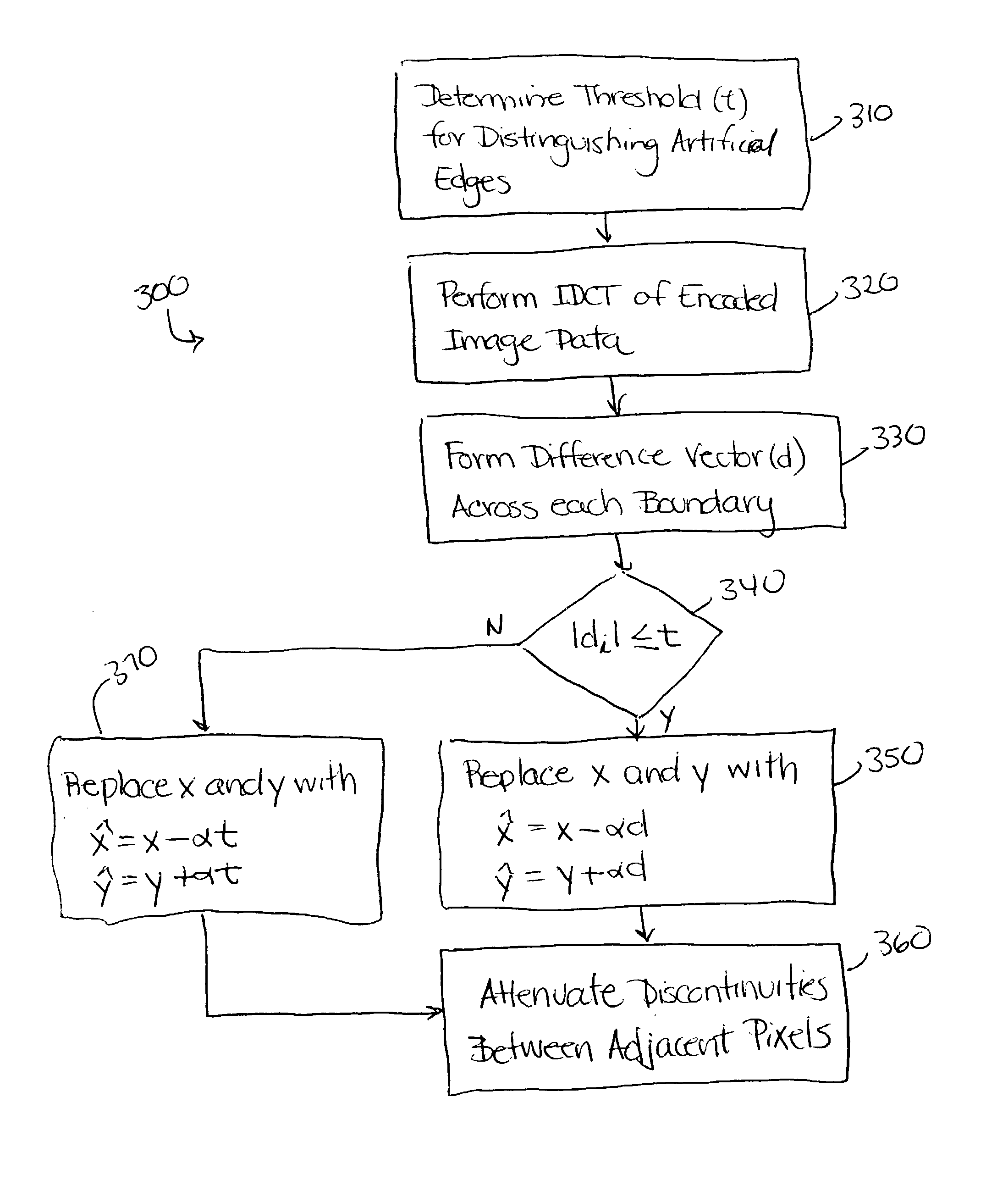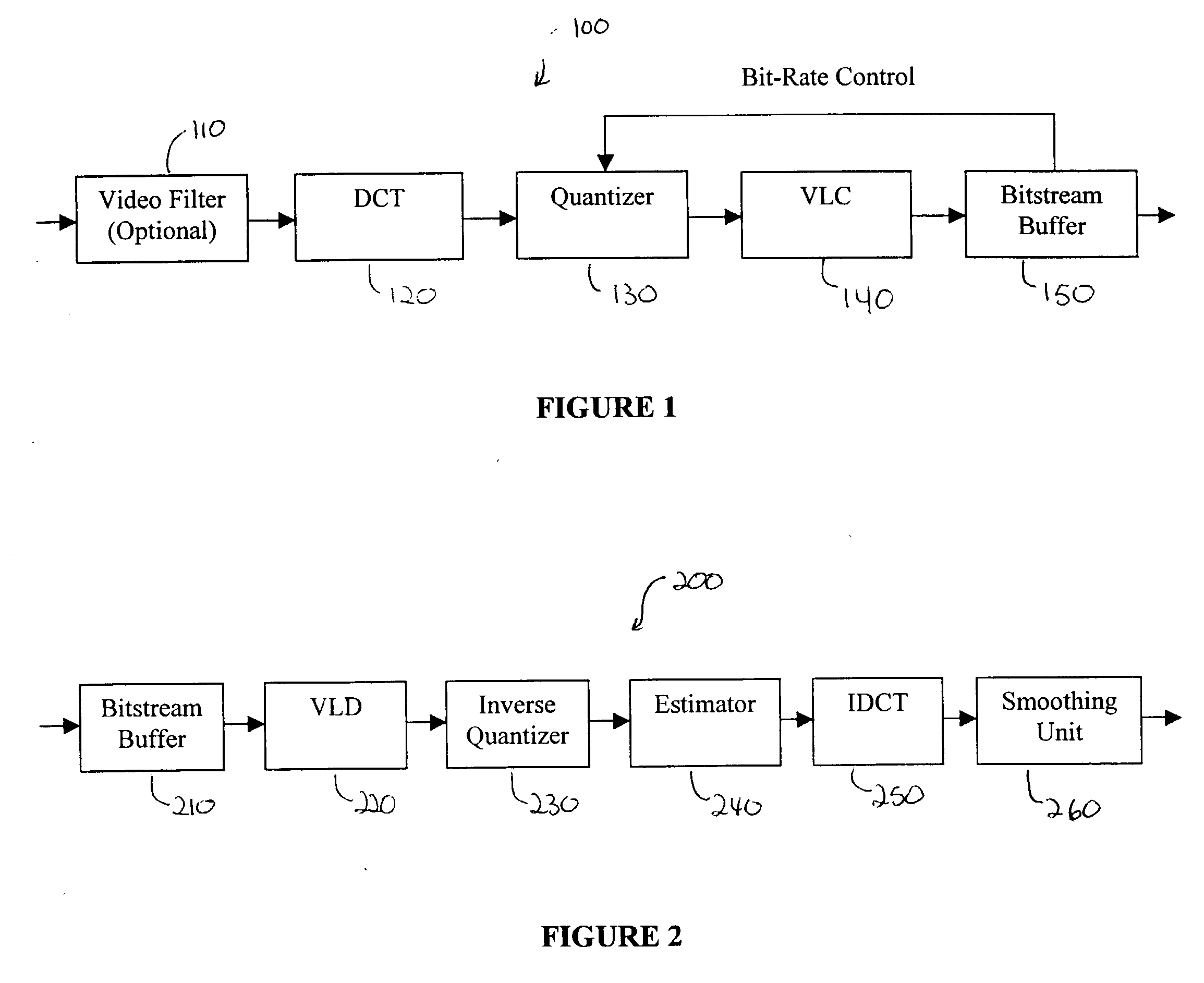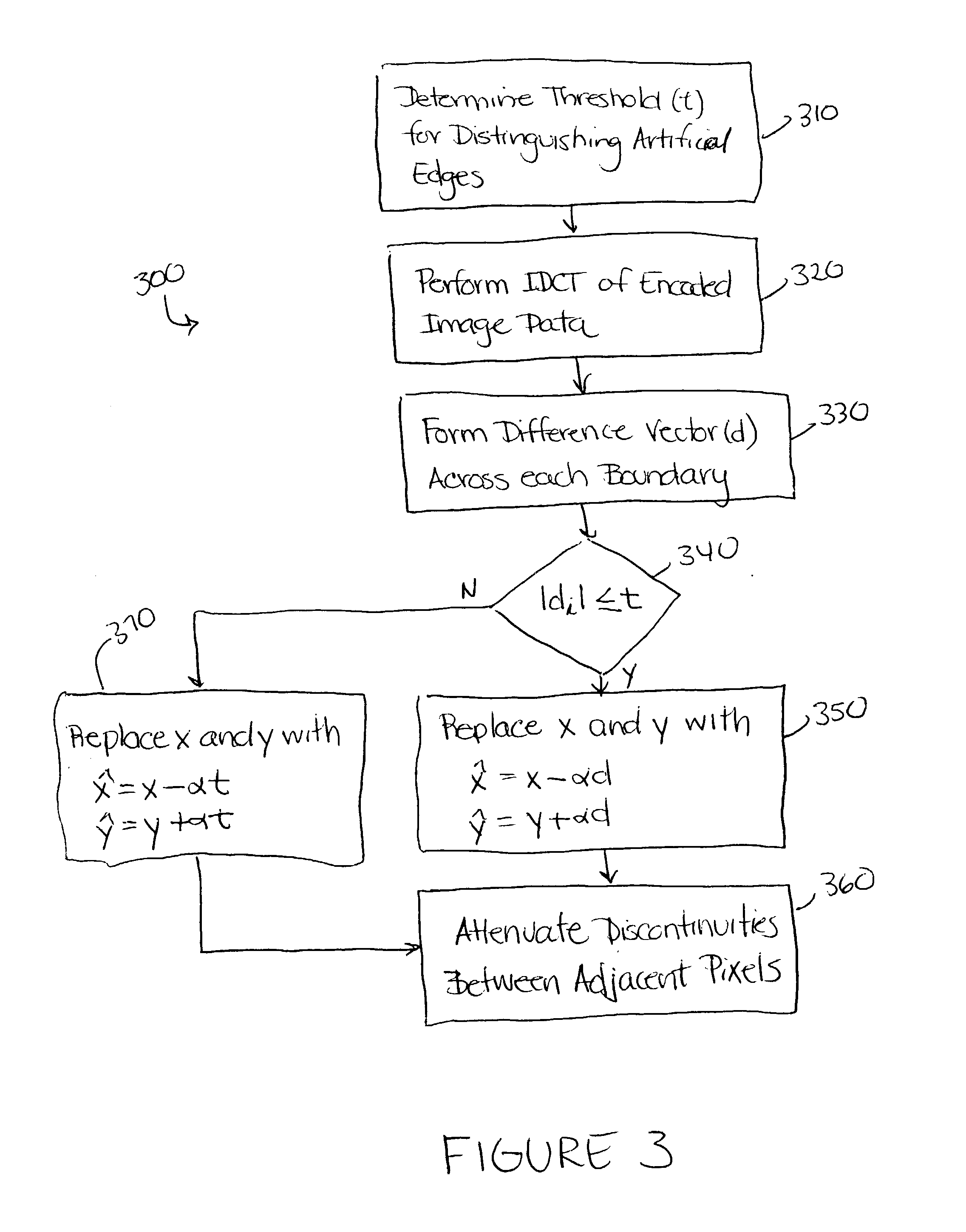Decoding compressed image data
a compressed image and data technology, applied in the field of image data processing, can solve the problems of requiring large amounts of computation time or memory, noticeable "blocking" artifacts in the decoded image, and most noticeable image degradation
- Summary
- Abstract
- Description
- Claims
- Application Information
AI Technical Summary
Problems solved by technology
Method used
Image
Examples
Embodiment Construction
27.50 dB 30.37 dB 32.81 dB Projection-based spatially adaptive 27.58 dB 30.43 dB 32.81 dB Overcomplete wavelet representations 27.58 dB 30.37 dB 32.46 dB
[0037] Embodiments of the present invention also improve the subjective visual quality of block-transform coded image data. For example, FIGS. 4A and 4B illustrate an exemplary image decoded without post-processing and decoded with post-processing in accordance with the present invention, respectively. The decoded JPEG image of FIG. 4A is shown to be very blocky. After applying the algorithm of the present invention in FIG. 4B, however, most of the annoying blocking artifacts have been smoothed.
[0038] In addition to the improved image quality mentioned above, embodiments of the present invention also reduce the computational complexity compared to other existing approaches. For example, excluding forward and inverse discrete cosine transformations, embodiments of the present invention may be performed with approximately O(K) additio...
PUM
 Login to View More
Login to View More Abstract
Description
Claims
Application Information
 Login to View More
Login to View More - R&D
- Intellectual Property
- Life Sciences
- Materials
- Tech Scout
- Unparalleled Data Quality
- Higher Quality Content
- 60% Fewer Hallucinations
Browse by: Latest US Patents, China's latest patents, Technical Efficacy Thesaurus, Application Domain, Technology Topic, Popular Technical Reports.
© 2025 PatSnap. All rights reserved.Legal|Privacy policy|Modern Slavery Act Transparency Statement|Sitemap|About US| Contact US: help@patsnap.com



